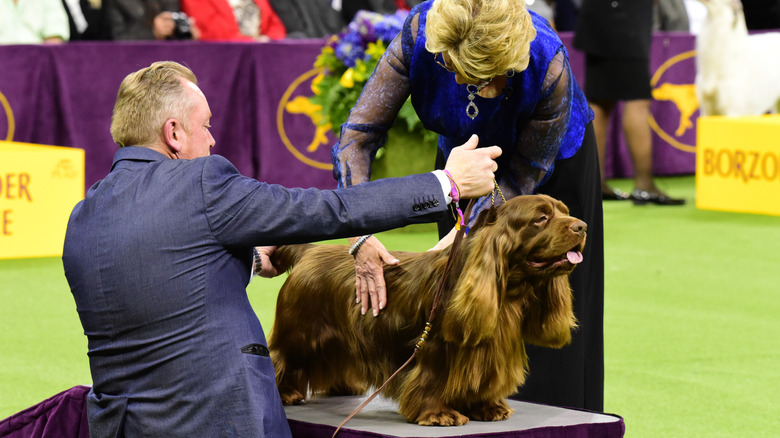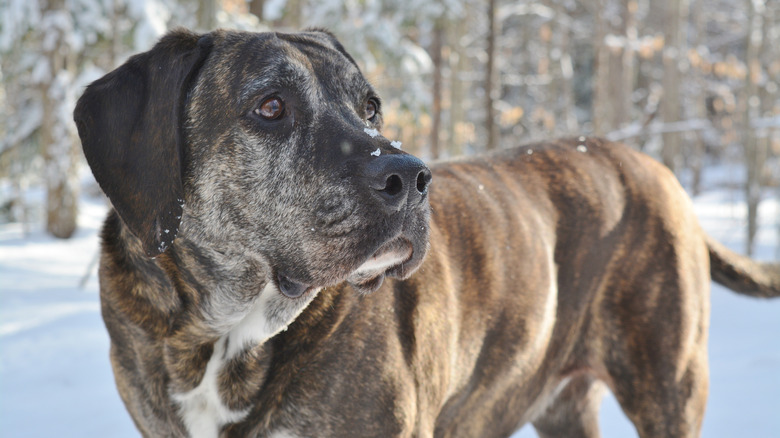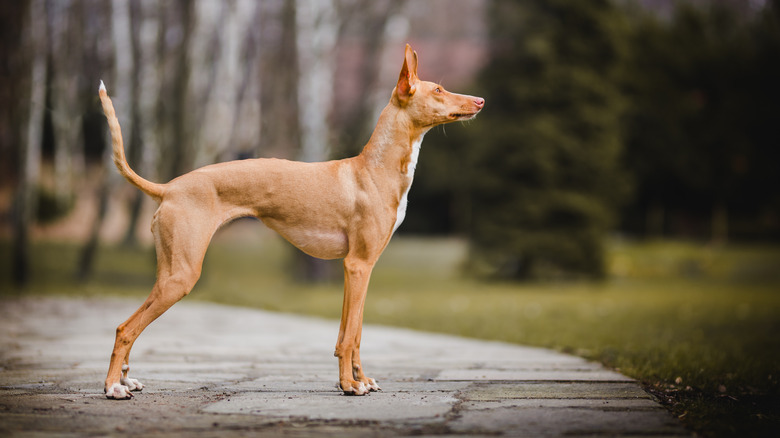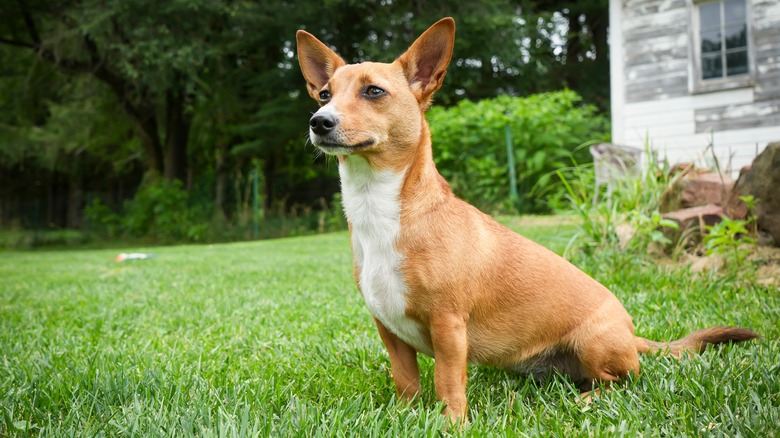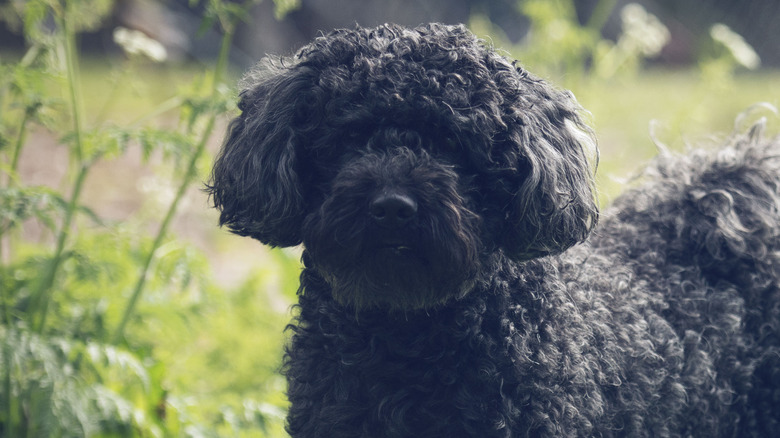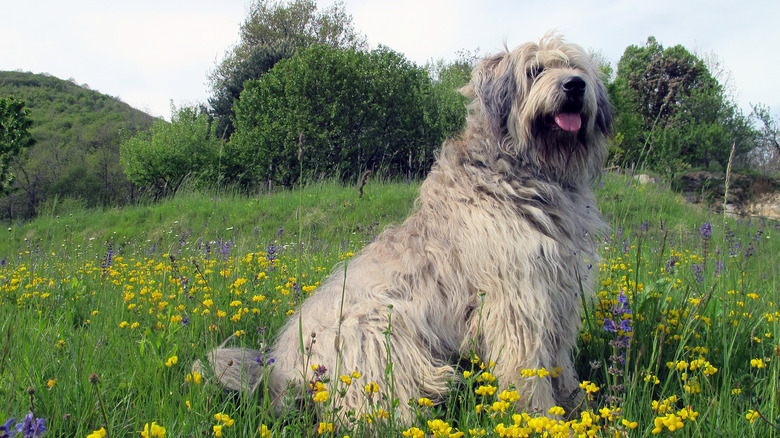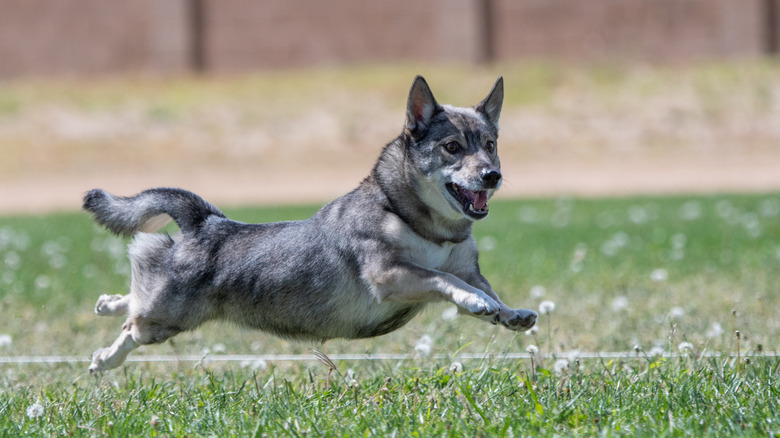Breeds You've Probably Never Heard Of At The 2025 Westminster Dog Show
For a dog to qualify to compete in the Westminster Kennel Club Dog Show, it must belong to a breed accepted by the American Kennel Club. The organisation typically adds one to three new breeds each year, with 2025 highlighted by the Danish-Swedish farmdog becoming the AKC's 202nd addition. As the roster has grown, it has led to notable victories at Westminster, such as Buddy Holly, a petit basset griffon Vendéen, who secured the first Best in Show win for the rare breed in 2023. The 2025 Westminster show continued the trend of milestones, with Monty the giant schnauzer pulling off the same feat.
While the competition has seen many remarkable wins throughout its history, certain breeds have clearly dominated. The wire fox terrier holds the record, with 15 Best in Show victories, followed by the Scottish terrier with 8. In contrast, Labrador retrievers and Golden retrievers — popular with the public — have competed frequently but never claimed the top prize. For casual canine enthusiasts, Westminster consistently showcases well-known favorites; however, the 2025 event also spotlighted unique, lesser-seen breeds, allowing spectators a chance to witness rare dogs demonstrating their best qualities.
Plott hound
A beloved staple of North Carolina, the Plott hound has been its state dog since 1989. The breed's origins trace back to the 1700s, when German immigrant Johannes George Plott brought Hanoverian hounds to America. His son, Henry, continued to breed them, passing the resulting lineage down through generations of the Plott family.
The Plott's unique history has made it something of an oddity, as it is the only coonhound breed among the six acknowledged by the AKC that does not have roots in the United Kingdom. Primarily used for hunting in its native North Carolina, the breed remains rare outside of that region. The AKC only recognized the Plott in 2007 as part of its hound category, leading to its 2008 Westminster debut.
As you might suspect, the Plott excels at hunting and tracking, and has a distinct song-like howl that can carry over large amounts of land. Visually, the Plott's short, reflective, and often brindle-patterned coat tend to draw the eye under the lights of Westminster.
Cirneco dell'Etna (Sicilian greyhound)
Competing as part of the hound group, the Cirneco dell'Etna, a.k.a. the Sicilian greyhound, has an ancient lineage dating back over 3,000 years. Historically, it served as a companion of Sicilian hunters tracking small game; today, owners mainly cherish the dog for its pleasant disposition. Although the breed boasts a rich heritage, it did not appear in the United States until the 1990s. Further, it only received AKC recognition in 2015, resulting in limited numbers outside of its native Sicily.
As a show dog, the Cirneco dell'Etna exemplifies elegance with a streamlined yet muscular build and keen, intelligent eyes. Potential trainers should note its independent streak and high prey drive, which can present challenges during training; boredom or frustration may lead to destructive behavior as well. Nonetheless, with the proper engagement, this hound's intelligence and warm nature can make it a fierce competitor at Westminster.
Portuguese podengo pequeno
The Portuguese podengo pequeno, the slightest variant of the Portuguese podengo breeds, typically measures only 8 to 12 inches at the shoulder. It joined the AKC hound group in 2013, though its ancestry stretches back to about 600 B.C.E. Despite the "pequeno" label meaning "small," this spirited dog had a big job and was historically valued in Portugal for controlling rodents and hunting rabbits. Even today, it remains infrequently seen in the U.S. despite the continued efforts of American breeders to increase its numbers.
Despite its petite size, the Portuguese podengo pequeno possesses a big attitude and abundant energy— traits that can make it an excellent show dog when adequately directed. Prospective trainers should prepare to provide ample exercise and positive reinforcement to help these canines excel in competition. With two distinct coat types, smooth or wiry, the podengo pequeno's compact frame is deceptively muscular. Meanwhile, its upright ears give it an utterly charming eager-to-please look.
Pumi
With origins possibly spanning back to around 800 A.D., the pumi's development emerged from crosses between Chinese, French, and German herding dogs, such as the Tsang apso, sheep poodle, and the now-extinct herding spitz. This combination resulted in a breed well-suited to herding across the vast Carpathian Basin of Hungary. While commonly seen in its native country (with significant pockets in Finland and Sweden), the pumi remains rare elsewhere. AKC recognition only came in 2016 under the herding category.
The Pumi's hallmark features are its corkscrew coat and alert expression. Despite its adorable appearance and kind-hearted nature, this working breed has long been cherished for its stamina, agility, and determined personality. Because they adapt quickly and demonstrate an openness to training, pumik (the plural of pumi) can excel within the herding category at Westminster. Their joyful attitude and spirited style make them a delight for both judges and spectators.
Bergamasco sheepdog
This distinctive, long-haired member of the herding group — recognized by the AKC in 2015 — has a somewhat nebulous background, though its name and traits date back centuries from its home of Bergamo, Italy. Used to guide livestock across rugged Alpine terrains, the Bergamasco sheepdog was bred to highlight desirable traits like intelligence, an independent work ethic, the ability to take commands, and a thick coat to protect it in harsh climates. Following World War II, the breed's numbers declined, and it remains relatively uncommon today.
Calm, composed, and protective, the Bergamasco sheepdog's work ethic comes through on the show floor when paired with a dedicated trainer. Spectators can't help but be intrigued by its striking "corded" or "flocked" coat, an iconic feature that sets this sheepdog apart as soon as it steps into the ring. It may be rare in numbers and name, but those luscious locks ensure that the Bergamasco sheepdog always stands out when appearing at Westminster.
Swedish vallhund
A little Viking in its own right, the Swedish vallhund dates back more than 1,000 years to when it functioned as a companion to the Scandinavian warriors. Although historians debate whether corgis influenced vallhunds or vice versa, it's widely acknowledged that the breed was vital to Viking-era herding and protection tasks. It also shares similarities with bigger Scandinavian spitz-type dogs.
In the 1940s, the vallhund nearly joined the list of extinct dog breeds, saved only by the determined efforts of Bjorn von Rosen, who sought to preserve the canines he so fondly admired during his childhood. Despite its ancient lineage, the AKC only recognized this breed under the herding group in 2007.
The Swedish vallhund stands 11.5 to 13.75 inches tall and combines a corgi-like body with a wolfish coat, creating an irresistibly cute yet mature look. Smart and eager to please, the vallhund adapts easily to show training, making it a treat for spectators who encounter it at Westminster.
